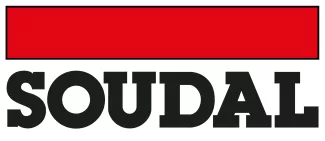“With SAP S/4HANA for group reporting, we can keep track of our growth”
Nick Van Eetveldt, Group Finance and Consolidation Manager at Soudal
Soudal had been looking for a tool to streamline and professionalize its consolidation process for some time. Unexpectedly, the migration to SAP S/4HANA presented a fitting alternative to traditional, manual work in Excel. Soudal relied on the expertise of element61 for the implementation and training. “In element61 we found the added value we expect from a partner,” says Nick Van Eetveldt, Soudal’s Group Finance and Consolidation Manager.
A family business with over 4,000 employees and a consolidated turnover of €1.3 billion, Soudal is the world’s largest independent producer of mastic, PU foam, and glue. Spread over 138 countries, the group operates 25 factories, in addition to a further 50 commercial establishments. The head office is located in Turnhout.

Soudal Application Platform
“We have a finance team with 25 staff at our head office,” says Nick Van Eetveldt. “We operate a shared service for operational accounting and reporting for 15 entities. Through its center of excellence, the team offers support in areas such as SAP, BI, and taxation. The larger foreign entities within the group have their own local finance teams.” For those large entities, SAP represents an established value. Altogether, 40 of the 75 entities work with SAP, accounting for 75% of the group’s business.
“That percentage will continue to rise in the coming years as we migrate more of our businesses to SAP. The goal is to fully standardize on SAP in the long term,” says Van Eetveldt. The companies that already work with SAP today often combine the software with other tools, such as Hermes (production planning), Qlikview, and other specific apps. “By combining SAP with these tools, we arrived at our own acronym for SAP: Soudal Application Platform.”
Rising complexity through growth
In recent years, Soudal’s growth has experienced a remarkable acceleration. “I started at Soudal in 2007,” continues Van Eetveldt. “The group then consisted of 20 entities. Consolidation and management reporting were done via Excel, and that worked fine. We had a lot of data available and built in the necessary checks. But with each new company — and the increased number of intercompany transactions that resulted from that growth — the complexity of monthly and annual reporting quickly increased.”
With this approach, Soudal missed a monthly full balance sheet or a detailed view of the cash flow. “There was an increasing need for reconciliation. That turned out to be a very time-intensive process, with a lot of manual work.” So Soudal started looking for a way to streamline the consolidation and reporting process and make it more efficient.
S/4HANA offers opportunity
Soudal wanted a tool that could do more and better than the traditional Excel process. The company turned to element61 for a solution. “element61 answered all our questions — even the most technical ones,” says Van Eetveldt. “The feedback from element61 turned out to be very valuable. That added value was exactly what we were looking for in a consultant. element61’s experienced consolidation team was a great match for us.”
Soudal had started the migration from SAP R/3 to SAP S/4HANA a year earlier. Group reporting — in full: SAP S/4HANA for group reporting — is fully built in to the new version of SAP. “Because a large part of our group is already familiar with SAP, we chose to support our group reporting with the functionality that S/4HANA offers for this.” That choice seems like a no-brainer, but it was nevertheless the result of a thorough analysis, supported by input from experts.
“There are stand-alone tools on the market that may be functionally richer than S/4HANA for group reporting,” says Van Eetveldt. “But for us that doesn’t outweigh the advantage of an embedded solution within SAP.” The data for accounting and for reporting are the same. It’s literally one version of the truth. “If you opt for a stand-alone tool, an ETL layer is inevitably involved, with all the associated risks of errors.” An additional argument in favor of SAP is that the tool for group reporting uses the same Fiori-based user interface. This ensures that S/4HANA for group reporting immediately feels familiar.
Reliable figures
“Don’t get me wrong, I still love Excel. But I don’t miss the manual work,” laughs Van Eetveldt. “We’ll keep Excel as a backup for our 2022 consolidation process, because we only went live with S/4HANA for group reporting in January 2023. The goal is to also do the 2022 consolidation in S/4HANA for group reporting, as the ultimate parallel run. But actually that only increases my confidence in reporting via SAP. While we sometimes saw numbers pop up in Excel that differed from what was in the accounting, we now really have one version of the truth.”
The correct data now flows directly from the accounting to the report. “That ensures a reliable result. We also no longer lose time by looking for where something might have gone wrong. As a result, the consolidation process is completed more quickly and we have more time for analysis. Moreover, we now also have more analysis options, which only deepens our insight.” S/4HANA for group reporting also offers Soudal a solution for the increasing volume of intercompany transactions. This is done by making the data transparent via ICMR (Intercompany Matching and Reconciliation). “This makes it easier for us to direct staff to implement corrections. That’s now much less cumbersome than before, precisely because it takes place within an integrated environment.”
Quick and efficient
Not only are the figures more reliable, Soudal has also considerably shortened the reporting lead time. “We used to have a rough monthly consolidation, without a full balance sheet or full cash flow. Now we have that information available as standard. In other words, S/4HANA for group reporting enables us to do the checks every month that we would otherwise only perform on a quarterly or annual basis. The annual consolidation will also be more efficient in the future, and we’ll meet our deadlines more easily.”
CSV as an interim solution
For the Soudal entities that don’t yet work with SAP, the new group reporting hasn’t led to drastic changes. “We ask those entities to extract the necessary data from their local systems and provide it as a CSV file, then we upload the file in the SAP tool.” It’s an approach that allows Soudal to avoid having to provide a separate integration with S/4HANA for group reporting for each local ERP package. As more entities move to S/4HANA, the use of CSV files will eventually die out.
Keep overview and support expansion
Although reporting via Excel in itself wasn’t a problem for Soudal, it would have slowed down the growth of the company in the long run. “We saw the growing complexity,” concludes Van Eetveldt. “That made it increasingly difficult to provide the required reporting. In this way, S/4HANA for group reporting supports our growth. As more entities are added, it no longer increases the pressure on reporting. In other words, we can handle further growth with our existing team, without losing the overview.”
Download version
Download the customer case 'Implementation of SAP S/4HANA for Group Reporting at Soudal'.
